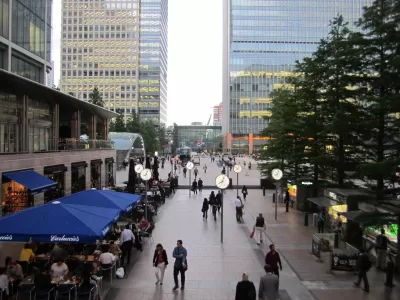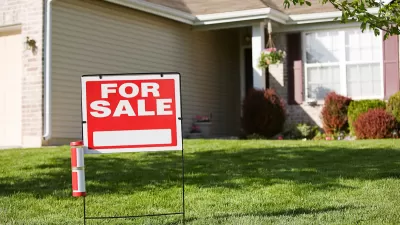It's no secret that urban centers are doing better today than they were 30 years ago. New FHFA data on housing prices confirms the trend and suggests that a changing environment (as opposed to changing preferences) account for it.

Chances are you already know about the "urban renaissance" currently sweeping the United States. "Downtown boosters and academics have argued that we're witnessing an urban revival in the United States. But there remains deep debate over how widespread the pattern really is and whether it points to a fundamental shift in where and how Americans live."
Emily Badger and Darla Cameron cover a new home price index from the Federal Housing Finance Agency, "based on unprecedented mortgage data covering 18,000 zip codes and nearly 100 million transactions between 1975 and 2015" that gauges how homes appreciate and depreciate in value.
The index confirms that central areas have indeed become more desirable and expensive. The researchers also point to patterns suggesting that consumer preferences (such as a supposed millennial proclivity for the city) do not account for the change. "'Data suggests that you don't need changing preferences in order to arrive at the patterns we see,' [senior economist William D. Larson] says."
"The traffic got worse. The crime lessened. The amenities improved. And at least some people have accrued more wealth to spend on high-end restaurants. In many ways, it's the environment that has changed, not us, Larson argues."
The data also shows that alongside an urban price renaissance, suburbs and exurbs are still growing even faster. The demographics, however, are shifting: wealthier and whiter in the cities, more people of color in the suburbs.
FULL STORY: Americans are paying more to live in the very places they once abandoned

Alabama: Trump Terminates Settlements for Black Communities Harmed By Raw Sewage
Trump deemed the landmark civil rights agreement “illegal DEI and environmental justice policy.”

Planetizen Federal Action Tracker
A weekly monitor of how Trump’s orders and actions are impacting planners and planning in America.

The 120 Year Old Tiny Home Villages That Sheltered San Francisco’s Earthquake Refugees
More than a century ago, San Francisco mobilized to house thousands of residents displaced by the 1906 earthquake. Could their strategy offer a model for the present?

Ken Jennings Launches Transit Web Series
The Jeopardy champ wants you to ride public transit.

BLM To Rescind Public Lands Rule
The change will downgrade conservation, once again putting federal land at risk for mining and other extractive uses.

Indy Neighborhood Group Builds Temporary Multi-Use Path
Community members, aided in part by funding from the city, repurposed a vehicle lane to create a protected bike and pedestrian path for the summer season.
Urban Design for Planners 1: Software Tools
This six-course series explores essential urban design concepts using open source software and equips planners with the tools they need to participate fully in the urban design process.
Planning for Universal Design
Learn the tools for implementing Universal Design in planning regulations.
Clanton & Associates, Inc.
Jessamine County Fiscal Court
Institute for Housing and Urban Development Studies (IHS)
City of Grandview
Harvard GSD Executive Education
Toledo-Lucas County Plan Commissions
Salt Lake City
NYU Wagner Graduate School of Public Service





























